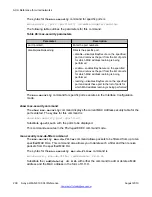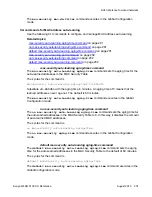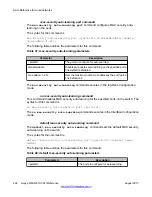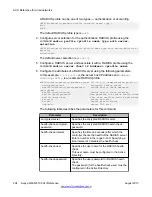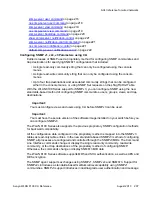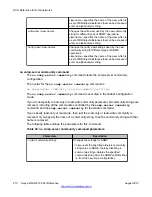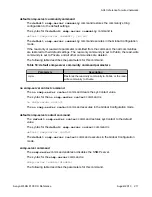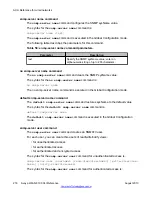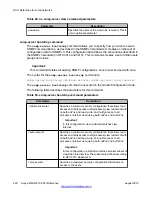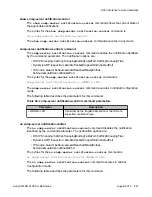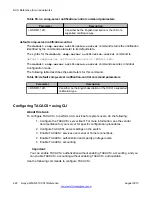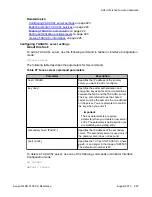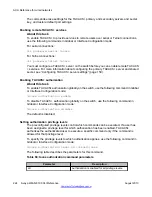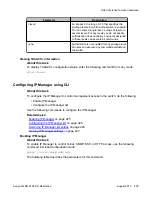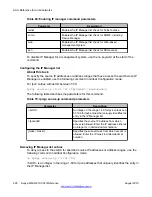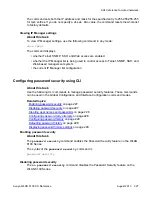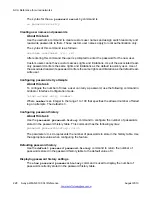
show snmp-server host
The
show snmp-server host
executes in the any mode.
no snmp-server host command
The
no snmp-server host
command deletes trap receivers from the table.
The proprietary method syntax for the
no snmp-server host
command is
no snmp-server host [<host-ip> [community-string>]]
Using the standards-based method of configuring SNMP, a trap receiver matching the IP
address and SNMP version is deleted.
The standards-based method syntax for the
no snmp-server host
command is
no snmp-server host <host-ip> [port<trap-port>] {v1|v2c|v3|
<community-string>}
The
no snmp-server host
command executes in the Global Configuration mode.
If you do not specify any parameters, this command deletes all trap destinations from the
s5AgTrpRcvrTable and from SNMPv3 tables.
The following table describes the parameters for this command.
Table 56: no snmp-server host command parameters
Parameter
Description
<host-ip> [<community-string>]
In the proprietary method, enter the following
variables:
• host-ip—the IP address of a trap
destination host.
• community-string—the community string
that works as a password and permits
access to the SNMP protocol.
If both parameters are omitted, all hosts are
cleared, proprietary and standards-based. If
a host IP is included, the community-string is
required or an error is reported.
<host-ip>
Using the standards-based method, enter
the IP address of a trap destination host.
port <trap-port>
Using the standards-based method, enter
the SNMP trap port.
v1|v2c|v3|<community-string>
Using the standards-based method,
specifies trap receivers in the SNMPv3 MIBs.
<community-string>—the community string
that works as a password and permits
access to the SNMP protocol.
ACLI Reference for wired networks
214 Avaya WLAN 8100 CLI Reference
August 2013

